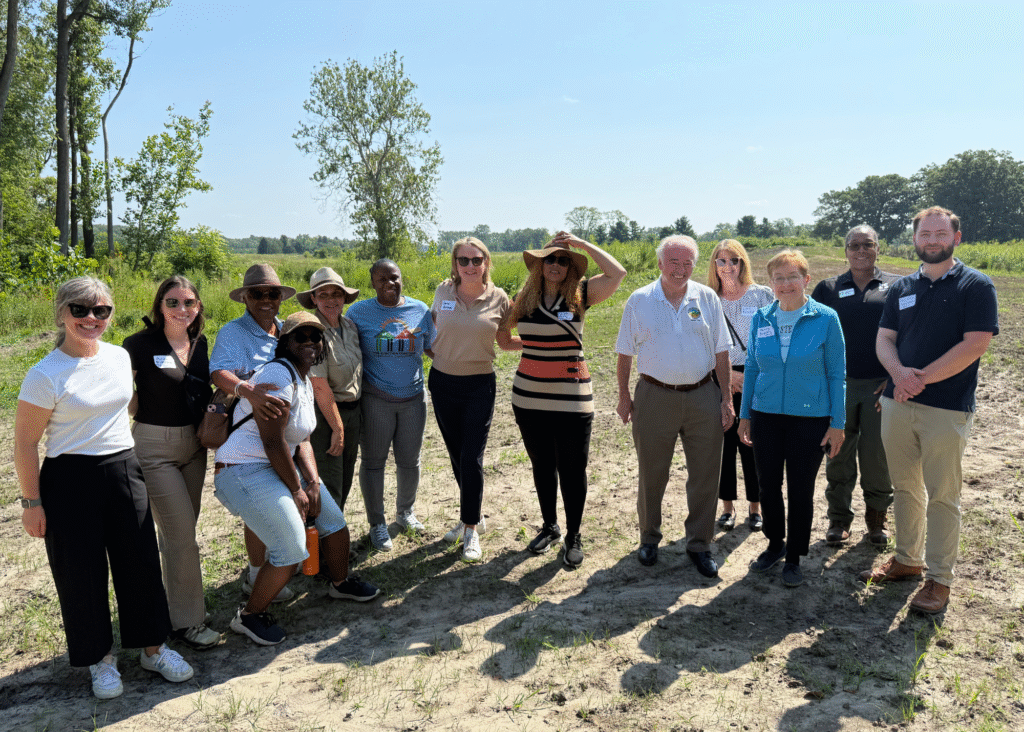September 18, 2025
Great Lakes Restoration Initiative or H2Ohio Community Impacts

Recent cuts to H2Ohio funding jeopardize the state’s commitment to ensuring clean water in communities. The recent budget bill process has resulted in a reduction of H2Ohio funding by $105 million over the next two years, representing nearly a 40 percent cut. This significant decrease threatens to undo the progress we have made. It underscores the urgent need for a long-term funding source for H2Ohio.
The Ohio Department of Natural Resources is responsible for restoring and creating new wetlands through H2Ohio, which helps improve water quality in nearby waterways and Lake Erie. On August 11th, the Ohio Environmental Council (OEC) partnered with the Junction Coalition to host a tour of one of these wetlands for local and state lawmakers, as well as congressional members, near Toledo, OH.
The tour showcased the Howard Marsh Metropark wetland expansion, which was guided by Metroparks Toledo and supported by both H2Ohio and the Great Lakes Restoration Initiative (GLRI). This expansion is part of a 1,000-acre wetland near the lakeshore in Jerusalem Township, designed to promote activities such as paddling, birding, and fishing through ecological restoration. Wetlands play a crucial role in filtering pollutants from the water and storing rapidly moving water off the landscape before it flows into our lakes and rivers.
These essential restoration projects rely on both state and federal investments. During the tour, we learned from the Junction Coalition how these investments impact the local community. The Toledo region has become more resilient to flooding, thanks to the increased wetland buffer against extreme storms. Additionally, the area has seen a boost in tourism, offering more opportunities for outdoor enthusiasts to engage with local waters. As a result, residents now enjoy cleaner water, which attracts new industries to the region.
The Great Lakes Restoration Initiative represents the largest investment in the Great Lakes in two decades and strategically addresses the most pressing threats to the Great Lakes ecosystem, accelerating progress toward long-term goals. Its funding is due for reauthorization this year, and communities cannot afford further cuts.
The OEC is committed to collaborating with legislative leaders and all stakeholders to ensure that H2Ohio and GLRI continue to flourish, safeguarding our most vital natural resource for every Ohioan.

